 W
WAn altar cloth is used in the Christian liturgy to cover the altar. It is both a sign of awe as well as decoration and protection of the altar and the sacred vessels. In the orthodox churches is covered by the antimension, which also contains the relics of saints.
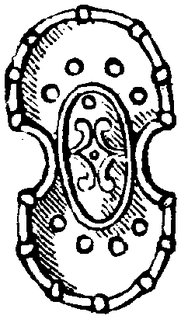 W
WIn ancient Rome, the ancilia were twelve sacred shields kept in the Temple of Mars. According to legend, one divine shield fell from heaven during the reign of Numa Pompilius, the second king of Rome. He ordered eleven copies made to confuse would-be thieves, since the original shield was regarded as one of the pignora imperii, sacred guarantors that perpetuated Rome as a sovereign entity.
 W
WApotropaic magic is a type of magic intended to turn away harm or evil influences, as in deflecting misfortune or averting the evil eye. Apotropaic observances may also be practiced out of vague superstition or out of tradition, as in good luck charms, amulets, or gestures such as crossed fingers or knocking on wood. The Greeks made offerings to the "averting gods", chthonic deities and heroes who grant safety and deflect evil.
 W
WAn aspergillum is a liturgical implement used to sprinkle holy water. It comes in two common forms: a brush that is dipped in the water and shaken, and a silver ball on a stick. Some have sponges or internal reservoirs that dispense holy water when shaken, while others must periodically be dipped in an aspersorium.
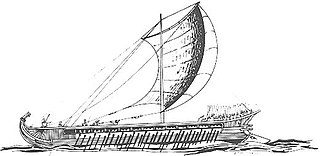 W
WAthenian sacred ships were ancient Athenian ships, often triremes, which had special religious functions such as serving in sacred processions (theoria) or embassies or racing in boat races during religious festivals. The two most famous such ships were the Paralus and the Salaminia, which also served as the messenger ships of the Athenian government in the 5th and 4th centuries BC. Other notable ships included one possibly named the Delias, a triakonter believed to be the ship in which Theseus had sailed to Crete, and which was involved in several traditional theoria to Delos; the vessel was constantly repaired by replacing individual planks to keep it seaworthy while maintaining its identity as the same ship. After the reforms of Cleisthenes, a ship was named for each of the ten tribes that political leader had created; these ships may also have been sacred ships.
A barsom is a ritual implement used by Zoroastrian priests to solemnize certain sacred ceremonies.
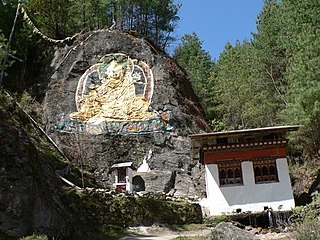 W
WBhutanese art is similar to Tibetan art. Both are based upon Vajrayana Buddhism and its pantheon of teachers and divine beings.
 W
WA boli is a fetish of the Bambara or Malinké of Mali.
 W
WA Book of Shadows is a book containing religious text and instructions for magical rituals found within the Neopagan religion of Wicca, and in many pagan practices. One famous Book of Shadows was created by the pioneering Wiccan Gerald Gardner sometime in the late 1940s or early 1950s, and which he utilised first in his Bricket Wood coven and then in other covens which he founded in following decades. The Book of Shadows is also used by other Wiccan traditions, such as Alexandrianism and Mohsianism, and with the rise of books teaching people how to begin following Wicca in the 1970s onward, the idea of the Book of Shadows was then further propagated amongst solitary practitioners unconnected to earlier traditions.
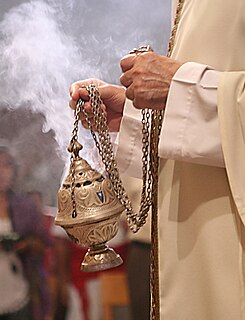 W
WA censer, incense burner, perfume burner or pastille burner is a vessel made for burning incense or perfume in some solid form. They vary greatly in size, form, and material of construction, and have been in use since ancient times throughout the world. They may consist of simple earthenware bowls or fire pots to intricately carved silver or gold vessels, small table top objects a few centimetres tall to as many as several metres high. Many designs use openwork to allow a flow of air. In many cultures, burning incense has spiritual and religious connotations, and this influences the design and decoration of the censer.
 W
WThe ceremonial use of lights occurs in liturgies of various Christian Churches, as well as in Jewish, Zoroastrian and Hindu rites and customs.
 W
WChacmool is the term used to refer to a particular form of pre-Columbian Mesoamerican sculpture depicting a reclining figure with its head facing 90 degrees from the front, supporting itself on its elbows and supporting a bowl or a disk upon its stomach. These figures possibly symbolised slain warriors carrying offerings to the gods; the bowl upon the chest was used to hold sacrificial offerings, including pulque, tamales, tortillas, tobacco, turkeys, feathers and incense. In an Aztec example the receptacle is a cuauhxicalli. Chacmools were often associated with sacrificial stones or thrones.
 W
WIn the practice of religion, a cult image or devotional image is a human-made object that is venerated or worshipped for the deity, person, spirit or daemon that it embodies or represents. In several traditions, including the ancient religions of Egypt, Greece and Rome, and modern Hinduism, cult images in a temple may undergo a daily routine of being washed, dressed, and having food left for them. Processions outside the temple on special feast days are often a feature. Religious images cover a wider range of all types of images made with a religious purpose, subject, or connection. In many contexts "cult image" specifically means the most important image in a temple, kept in an inner space, as opposed to what may be many other images decorating the temple.
 W
WThe E-meter is an electronic device for displaying the electrodermal activity (EDA) of a human being. The device is used for auditing in Scientology and divergent groups. The efficacy and legitimacy of Scientology's use of the E-meter has been subject to extensive debate and litigation and in accordance with a federal court order, the Church of Scientology now publishes disclaimers in its books and publications declaring that the E-meter "by itself does nothing" and that it is used specifically for spiritual purposes.
 W
WThe eagle bone whistle is a religious object, used by some members of Native American spiritual societies in sacred ceremonies. They are made from bones of either the American bald eagle or the American golden eagle, and are considered powerful spiritual objects.
 W
WA fetish is an object believed to have supernatural powers, or in particular, a human-made object that has power over others. Essentially, fetishism is the attribution of inherent value, or powers, to an object.
 W
WA God's eye is a spiritual and votive object made by weaving a design out of yarn upon a wooden cross. Often several colors are used. They are commonly found in Mexican and Mexican American communities, among both Indigenous and Catholic peoples.
 W
WA grimoire is a textbook of magic, typically including instructions on how to create magical objects like talismans and amulets, how to perform magical spells, charms and divination, and how to summon or invoke supernatural entities such as angels, spirits, deities and demons. In many cases, the books themselves are believed to be imbued with magical powers, although in many cultures, other sacred texts that are not grimoires have been believed to have supernatural properties intrinsically. The only contents found in a grimoire would be information on spells, rituals, the preparation of magical tools, and lists of ingredients and their magical correspondence. In this manner, while all books on magic could be thought of as grimoires, not all magical books should be thought of as grimoires.
 W
WHoly water is water that has been blessed by a member of the clergy or a religious figure. The use for cleansing prior to a baptism and spiritual cleansing is common in several religions, from Christianity to Sikhism. The use of holy water as a sacramental for protection against evil is common among Lutherans, Anglicans, Roman Catholics, and Eastern Christians.
 W
WThe kirpan is a sword or a knife of any size and shape, carried by Sikhs. It is also part of a religious commandment given by Guru Gobind Singh in 1699, in which he gave an option to the Sikhs, if they accepted they must wear the five articles of faith at all times, the kirpan being one of five Ks.
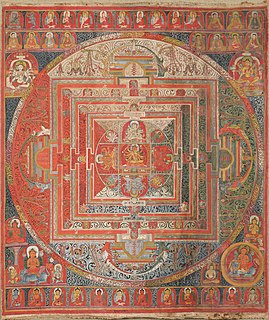 W
WA mandala is a geometric configuration of symbols. In various spiritual traditions, mandalas may be employed for focusing attention of practitioners and adepts, as a spiritual guidance tool, for establishing a sacred space and as an aid to meditation and trance induction. In the Eastern religions of Hinduism, Buddhism, Jainism and Shintoism it is used as a map representing deities, or specially in the case of Shintoism, paradises, kami or actual shrines.
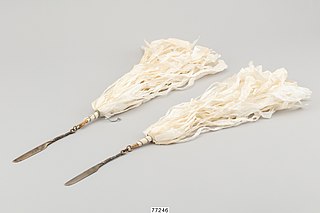 W
WThe mengdu, also called the three mengdu and the three mengdu of the sun and moon, are a set of three kinds of brass ritual devices—a pair of knives, a bell, and divination implements—which are the symbols of shamanic priesthood in the Korean shamanism of southern Jeju Island. Although similar ritual devices are found in mainland Korea, the religious reverence accorded to the mengdu is unique to Jeju.
 W
WNkisi or Nkishi are spirits or an object that a spirit inhabits. It is frequently applied to a variety of objects used throughout the Congo Basin in Central Africa, especially in the Territory of Cabinda that are believed to contain spiritual powers or spirits. The term and its concept have passed with the Atlantic slave trade to the Americas.
 W
WOmamori are Japanese amulets commonly sold at Shinto shrines and Buddhist temples, dedicated to particular Shinto kami as well as Buddhist figures, and are said to provide various forms of luck or protection.
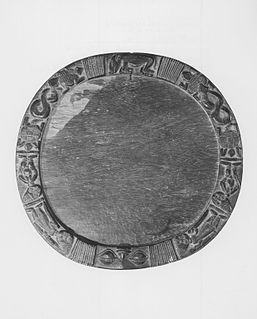 W
WAn ọpọ́n Ifá is a divination tray used in traditional African and Afro-American religions, notably in the system known as Ifá and in Yoruba tradition more broadly. The etymology of opon, literally meaning "to flatter", explains the artistic and embellished nature of the trays, as they are meant to praise and acknowledge the noble work of the Babalawo (diviners). The etymology of the term Ifá, however, has been a subject of debate. Ifá may be considered an orisha, or a Yoruba god — specifically, the god of divination Orula. Conversely, some scholars have referred to Ifá merely as the "great consulting oracle" as opposed to a god or a deity, without any divine connotations.
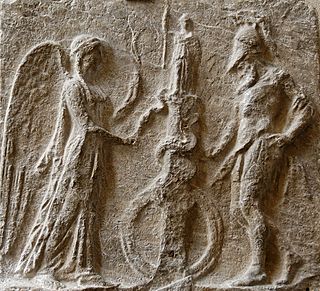 W
WIn Greek and Roman mythology, the palladium or palladion was a cult image of great antiquity on which the safety of Troy and later Rome was said to depend, the wooden statue (xoanon) of Pallas Athena that Odysseus and Diomedes stole from the citadel of Troy and which was later taken to the future site of Rome by Aeneas. The Roman story is related in Virgil's Aeneid and other works. Rome possessed an object regarded as the actual Palladium for several centuries; it was in the care of the Vestal Virgins for nearly all this time.
 W
WA Tibetan prayer flag is a colorful rectangular cloth, often found strung along trails and peaks high in the Himalayas. They are used to bless the surrounding countryside and for other purposes. Prayer flags are believed to have originated with Bon. In Bon, shamanistic Bonpo used primary-colored plain flags in Tibet. Traditional prayer flags include woodblock-printed text and images.
 W
WA rehue or kemukemu is a type of pillar-like sacred altar used by the Mapuche of Chile in many of their ceremonies.
 W
WA religious goods store, also known as a religious bookstore or religious supplies shop, is a store specializing in supplying materials used in the practice of a particular religious tradition, such as Christianity, Chinese folk religion, Taoism and Buddhism, among other religions.
 W
WA reliquary is a container for relics. A portable reliquary may be called a fereter, and a chapel in which it is housed a feretory.
 W
WA rushnyk or rushnik is a ritual cloth embroidered with symbols and cryptograms of the ancient world. They have been used in sacred Eastern Slavic rituals, religious services and ceremonial events such as weddings and funerals. Each region has its own designs and patterns with hidden meaning, passed down from generation to generation and studied by ethnographers.
 W
WA shrunken head is a severed and specially prepared human head that is used for trophy, ritual, or trade purposes.
 W
WSpatika Lingam or Crystal Lingam or Crystal Shivling is a type of Lingam made from quartz. Spatika Lingam is called sphatika Sivalingam
 W
WThere are five fables of ancient Greek origin that deal with the statue of Hermes. All have been classed as burlesques that show disrespect to the god involved and some scepticism concerning the efficacy of religious statues as objects of worship. Statues of Hermes differed according to function and several are referenced in these stories. Only one fable became generally retold in later times, although two others also achieved some currency.
 W
WA tchitcherik or tchitcherik sakwa is a statue of the ancestors of the Moba of northern Togo and Ghana.
 W
WIn Māori mythology, Tiki is the first man created by either Tūmatauenga or Tāne. He found the first woman, Marikoriko, in a pond; she seduced him and he became the father of Hine-kau-ataata. By extension, a tiki is a large or small wooden or stone carving in humanoid form, although this is a somewhat archaic usage in the Māori language. Carvings similar to tikis and coming to represent deified ancestors are found in most Polynesian cultures. They often serve to mark the boundaries of sacred or significant sites.
 W
WUthsavar or Utsavar is derived from the Sanskrit word, Utsavam, a festival predominantly referring to Hindu religion. In Hinduism, it is referred to the festival deity's moorthi usually taken during temple festival processions. Utsavar moorthis are generally made of metal, and Moolavar murthi is usually made of stone.
 W
WA votive column is the combination of a column (pillar) and a votive image.
 W
WThe World Trade Center cross, also known as the Ground Zero cross, is a formation of steel beams found among the debris of the World Trade Center site in Lower Manhattan, New York City, following the September 11 attacks in 2001. This set of beams is so named because it resembles the proportions of a Christian cross. The beams have been part of an exhibit at the National September 11 Museum since 2014.
 W
WA xoanon was an Archaic wooden cult image of Ancient Greece. Classical Greeks associated such cult objects, whether aniconic or effigy, with the legendary Daedalus. Many such cult images were preserved into historical times, though none are known to have survived to the modern day, except as copies in stone or marble. In the 2nd century CE, Pausanias described numerous xoana in his Description of Greece, notably the image of Hera in her temple at Samos. "The statue of the Samian Hera, as Aethilos [sic] says, was a wooden beam at first, but afterwards, when Prokles was ruler, it was humanized in form". In Pausanias' travels he never mentions seeing a xoanon of a "mortal man".